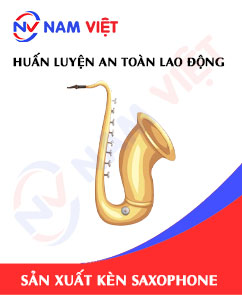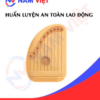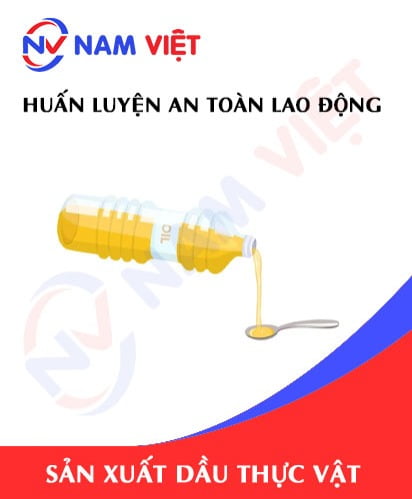Occupational Safety Training for Saxophone Manufacturing
99,000 ₫
Note: The above price is calculated per person and may vary depending on the number of trainees participating in the course and market fluctuations. For more accurate pricing support, please refer to the price list or contact our consultants directly.
Occupational safety is an important issue in saxophone manufacturing plants and needs to be addressed promptly to ensure the health and safety of workers and enhance the reputation of businesses. The Occupational Safety Training course is one of the most effective solutions to raise awareness of accident prevention for workers involved in saxophone manufacturing.
Table of Contents
Toggle1. Overview of the Saxophone
a. What is a Saxophone?
The saxophone, commonly called saxophone, is a wind instrument in the brass family, but it is usually made of metal, mainly brass. The saxophone was invented by Adolphe Sax in the 1840s and patented in 1846. It is one of the main instruments in many music genres, especially jazz, classical, pop, and rock music.
Components of the Saxophone
- Body: The main part of the saxophone, usually made of brass, with holes to adjust the pitch.
- Neck: The part that connects the mouthpiece and the body.
- Mouthpiece: Where the player places their mouth to blow air into the instrument. The mouthpiece is usually made of plastic, metal, or ebonite.
- Reed: A thin piece of wood placed on the mouthpiece that vibrates when the player blows air, producing sound.
- Keys: Metal buttons that cover the holes on the body to create different notes.
Types of Saxophones
There are various types of saxophones, each with distinct pitch and tone:
- Soprano Saxophone: The highest-pitched saxophone, usually straight in shape.
- Alto Saxophone: The most popular type of saxophone, with a lower pitch than the soprano.
- Tenor Saxophone: Commonly used in jazz and rock music, with a lower pitch than the alto.
- Baritone Saxophone: The lowest-pitched among the four popular types, often used in big bands and jazz orchestras.
Applications of the Saxophone
- Jazz Music: The saxophone is one of the primary instruments in jazz, widely used since the 1920s. Famous jazz artists like John Coltrane, Charlie Parker, and Sonny Rollins have left a mark with classic saxophone pieces.
- Classical Music: Although less common than in jazz, the saxophone still holds an important place in some classical works and symphony orchestras.
- Pop and Rock Music: The saxophone is also used in many pop and rock songs, adding unique sounds and richness to melodies.

b. Machinery Used in Saxophone Production
1. Stamping Press
The stamping press is used to cut and shape metal pieces from brass sheets. Parts such as the body, bell, and other metal pieces are formed using the stamping press.
2. Rolling Machine
The rolling machine is used to bend and shape the round parts of the saxophone, such as the body and neck. The metal is bent into the required shapes before being welded together.
3. Welding Machine
Welding machines, including gas and electric welding, are used to join metal pieces together. Welding is an important step in creating a strong and seamless body.
4. CNC Machining
CNC (Computer Numerical Control) machines are used to create complex and precise parts on the saxophone. CNC allows machining of small parts like keys and holes on the body with high accuracy.
5. Polishing Machine
The polishing machine smooths and brightens the metal surface of the saxophone. This process removes scratches and gives the instrument a shiny appearance.
6. Electroplating Machine
The electroplating machine applies a protective coating to the saxophone surface, often gold or silver plating. Plating protects the metal from corrosion and enhances its appearance.
7. Lathe Machine
The lathe machine is used to machine the round and long parts of the saxophone, such as the neck and body tubes. It ensures these parts have precise dimensions and shapes.
8. Laser Cutting Machine
Laser cutting machines are used to cut small and complex details from metal sheets. Laser technology enables highly precise cuts with minimal errors.
9. Measuring and Testing Equipment
Measuring and testing devices, including thickness gauges, hardness testers, and sound testing machines, are used to ensure the quality of each part and the entire instrument.

c. Famous Saxophone Brands
1. Selmer Paris
Selmer Paris is one of the most prestigious saxophone brands worldwide, known for excellent sound quality and durability. Famous product lines include the Mark VI, Super Action 80 Series II, and Reference Series.
2. Yamaha
Yamaha is one of the largest musical instrument manufacturers globally, and their saxophones are highly popular. Yamaha offers a wide range from beginner models to professional models like the Yamaha YAS-62 and YTS-875EX.
3. Yanagisawa
Yanagisawa is a Japanese saxophone brand famous for exquisite craftsmanship and sweet tone. Popular models like the AWO10 and T992 are favored by professional musicians.
4. Julius Keilwerth
Julius Keilwerth is a German saxophone brand known for innovative designs and powerful sound. Popular models such as the SX90R and MKX Series are widely used in the jazz community.
5. P. Mauriat
P. Mauriat is a relatively new saxophone brand that has quickly gained recognition for excellent sound quality and affordable prices. Notable models include the PMXT-66R and PMXA-67R.
6. Cannonball
Cannonball is an American saxophone brand known for unique designs and rich sound. Their Big Bell Stone Series and Vintage Reborn Series are popular among jazz and rock musicians.
7. Borgani
Borgani is an Italian saxophone brand famous for high-quality handcrafted instruments. Borgani produces saxophones with warm and rich tones, such as the Jubilee Series and Vintage Series.
8. Buffet Crampon
Buffet Crampon is a renowned classical instrument manufacturer from France, also producing high-quality saxophones. Their notable product lines include the Senzo and 400 Series.
9. Leblanc
Leblanc is a long-established French brand famous for woodwinds and saxophones. Leblanc saxophones are known for balanced sound and high durability.
10. Conn-Selmer
Conn-Selmer is an American brand combining two famous manufacturers, Conn and Selmer. Conn-Selmer saxophones like the Conn 88H and Selmer AS42 are known for good sound quality and affordable prices.

d. Specific Jobs in a Saxophone Manufacturing Factory
Group 1
- CEO, Deputy CEO, and department heads in the saxophone manufacturing factory.
Group 2
- Safety Officers: manage factory safety, design safety procedures, supervise and urge employees to comply with safe working procedures.
Group 3
- Metal Sheet Cutting Workers: operate cutting and stamping machines to cut and shape metal pieces from brass sheets.
- CNC Operators: operate CNC machines to process complex and precise saxophone parts.
- Lathe Operators: operate lathe machines to shape round and long saxophone parts such as neck and body tubes.
- Welders: perform gas and electric welding to join metal pieces into a complete saxophone body.
- Metal Bending Workers: use bending machines to shape curved saxophone parts.
- Polishing Workers: use polishing machines to smooth and brighten the saxophone’s metal surface.
- Electroplating Specialists: perform electroplating steps to apply protective and decorative coatings (gold, silver) on the saxophone surface.
- Assemblers: assemble parts such as keys, springs, and reeds onto the saxophone body.
- Quality Inspectors: check assembled parts to ensure smooth and precise operation.
- Sound Adjustment Specialists: adjust and fine-tune parts to ensure the best sound quality.
Group 4
- Office work, service, sales, and marketing.
- Production management, quality control, human resource management, material management, financial and accounting management.
- Research and development of new products, product design, and packaging design.
2. Overview of Occupational Safety Training Course for Saxophone Production
In this article, we focus on issues related to Group 3 because Group 3 consists of workers directly involved in the production process and face the highest occupational safety risks. For reference on other groups, see here.
a. What is Group 3 Occupational Safety Training?
- Group 3 occupational safety training consists of sessions that equip workers with awareness on how to prevent workplace accidents.
- The safety training course helps workers recognize and avoid hazards, reducing risks of occupational accidents during work.
REGISTER FOR OCCUPATIONAL SAFETY TRAINING SERVICE
b. Training Duration
Initial safety training duration
- Total training time must be at least 24 hours, including examination time.
- 8 hours of theory on occupational safety and hygiene policies and laws
- 8 hours of theory on basic occupational safety and hygiene knowledge
- 4 hours of theory on specialized training content
- 2 hours of practical training on specialized content
- 2 hours of final theoretical examination
The safety training center will schedule multiple sessions depending on workers’ availability. Typically, there are 6 sessions over 3 days, provided the company arranges continuous study time.
Periodic safety training duration
- Before the occupational safety card expires, workers must attend a periodic occupational safety training course, with periodic training time at least 50% of the initial training time.
Explanation: The total time for periodic occupational safety training must be at least 12 hours, including examination. After completing the periodic training and passing the test, workers will be reissued or extended their occupational safety cards.
c. Training Course Content
| No. | TRAINING CONTENT | TRAINING DURATION (HOURS) | |||
| Total | Including | ||||
| Theory | Practice | Exam | |||
| I | System of occupational safety and hygiene policies and laws | 8 | 8 | 0 | 0 |
| 1 | Overview of legal documents system on occupational safety and hygiene. | 6 | 6 | ||
| 2 | System of occupational safety and hygiene technical standards and regulations. | 1 | 1 | ||
| 3 | Specific regulations by state management agencies on occupational safety and hygiene when constructing, expanding, or renovating facilities to produce, use, preserve, store, and inspect machines, equipment, materials, and substances requiring strict occupational safety and hygiene. | 1 | 1 | ||
| II | Basic knowledge of occupational safety and hygiene | 8 | 8 | 0 | 0 |
| 1 | Basic knowledge of hazardous and harmful factors at the workplace. | 4 | 4 | ||
| 2 | Methods to improve working conditions. | 1 | 1 | ||
| 3 | Safety culture in production and business. | 1 | 1 | ||
| 4 | Rights and obligations of employers and workers; occupational safety policies and regimes for workers; functions and tasks of safety and hygiene network staff. | 1 | 1 | ||
| 5 | Occupational safety rules, signage, safety instructions, use of safety equipment and personal protective equipment; first aid skills for occupational accidents and prevention of occupational diseases. | 1 | 1 | ||
| III | Specialized training content | 6 | 4 | 2 | 0 |
| Comprehensive knowledge of machines, equipment, substances generating hazardous and harmful factors; risk analysis, assessment, and management regarding occupational safety and hygiene; safe working procedures with machines, equipment, and substances requiring strict occupational safety and hygiene. | 6 | 4 | 2 | ||
| IV | Final safety training course examination | 2 | 2 | 0 | 0 |
| Total | 24 | 22 | 2 | ||
See more training contents of the 6 groups
d. Occupational Safety Card
After completing the occupational safety training course and passing the exam, workers will be issued a Occupational Safety Card (commonly called the Occupational Safety Certificate for Group 3).
The Group 3 safety card clearly displays information such as full name, date of birth, job and specific working environment, as well as training duration, red seal, and signature confirming completion of the training.
According to the issuance regulations stated in Clause 2 of Article 24 of Decree 44/2016/ND-CP, there are two cases:
- If the employer and employee have a labor contract, the employer must sign, stamp, and affix the safety card for the trained Group 3 employee after the training and passing the exam.
- If the worker is freelance or temporary, without a labor contract, the training unit must sign, stamp, and affix the safety card after the training and exam.

3. Identifying Hazards Affecting Workers in Saxophone Production
Risks from Machinery
- Cutting and pressing machines: Workers can suffer cuts or crushed hands if not used properly or if safety procedures are ignored. Warning signs include sharp edges, moving parts, and unprotected work areas.
- Welding machines: Risk of burns and eye injuries from welding sparks. Recognized by bright flashes and high heat from welding area.
- Turning and CNC machines: Risk of entanglement or injury from moving parts. Warning signs include dirty work areas, lack of safety guards, and non-compliance with safe working procedures.
Risks from Materials and Chemicals
- Metal contact: Sharp metal edges can cause cuts. Workers should be cautious handling metal pieces, especially large sheets or unfinished parts.
- Plating and polishing chemicals: Risk of poisoning, skin, and eye irritation from harmful chemicals like acids, alkalis, and solvents. Signs include unpleasant odors and discomfort in eyes, skin, and respiratory system.
Risks from Dust and Gases
- Metal dust: Dust from cutting, grinding, and polishing metals may cause respiratory problems if inhaled. Workers may notice fine dust in the air and symptoms like shortness of breath or coughing.
- Toxic gases: Gases released during welding and plating can cause poisoning and health issues. Warning signs include unpleasant smells and dizziness or nausea in production areas.
Other Physical Risks
- Noise: Loud machinery noise can damage hearing. Workers may feel ear ringing, pain, or temporary hearing loss after working.
- Burns: Risk of burns from contact with hot metal or chemicals. Warning signs include high temperatures at work areas and burning sensations upon contact.
Risks from Improper Handling
- Repetitive motions: Repeated movements can cause muscle and joint strain. Workers may feel aches or fatigue in muscles and joints after work.
- Improper working posture: Working in awkward postures can cause spine and musculoskeletal problems. Workers should maintain proper sitting or standing postures to avoid back pain and related issues.

4. Safety Measures When Participating in Saxophone Production
Training and Education
- Occupational safety training: Provide comprehensive training for all employees on safety procedures and machine usage. Training should include emergency situations, incident handling, and responses to specific factory hazards.
- Personal Protective Equipment (PPE) training: Ensure employees know how to properly use and maintain PPE.
Use of Personal Protective Equipment (PPE)
- Safety glasses: Protect eyes from sparks, metal dust, and chemicals.
- Gloves: Protect hands from sharp edges and harmful chemicals. Gloves should be selected appropriately for each task.
- Masks or respirators: Protect respiratory system from metal dust, toxic gases, and chemical fumes.
- Protective coats: Shield the body from hazardous liquids and chemicals.
- Noise-canceling earplugs: Protect hearing from loud machinery noise.
Machinery Maintenance and Inspection
- Regular inspection: Perform periodic checks and maintenance to ensure machines operate safely and properly.
- Equipment maintenance: Ensure timely repair and upkeep of all equipment to prevent malfunctions and accidents.
Risk Management and Safety Procedures
- Warning labels: Place clear signs and warning labels on machines and hazardous areas.
- Safe working procedures: Establish safe work processes for specific tasks and ensure employees comply.
- Install safety devices: Provide protective guards, locking mechanisms, and other safety devices on machinery.
Chemical and Gas Control
- Good ventilation: Ensure production areas are well-ventilated to remove dust, toxic gases, and chemical fumes.
- Dust extraction systems: Install dust collectors to minimize metal dust in the air.
- Safe chemical storage: Store chemicals and solvents in sealed, secure containers and provide Safety Data Sheets (SDS) to employees.
- Regularly conduct work environment monitoring in factories to collect and analyze harmful factors, thereby adjusting and reducing hazards to prevent occupational diseases.
Physical Risk Management
- Proper working posture: Guide employees to maintain correct postures to avoid musculoskeletal injuries.
- Perform stretching exercises: Encourage employees to do stretching to reduce muscle tension.
Mechanical and Collision Risk Management
- Implement collision prevention measures: Ensure work areas have warning signs and barriers to prevent collisions with moving machine parts.
- Be cautious when handling machines: Make sure machines are off during maintenance or adjustment work.
Health Management and First Aid
- Periodic health checks: Conduct regular health screenings to detect work-related health issues early.
- Emergency response plan: Develop and implement plans including first aid procedures, emergency contacts, and evacuation protocols.
Work According to Safety Rules and Policies
- Comply with safety regulations: Ensure all employees adhere to company safety policies and regulations.
- Monitoring and evaluation: Conduct regular safety process assessments and improve as needed.
5. Benefits of Occupational Safety Training for Saxophone Production
An Toàn Nam Việt provides your business with great benefits after completing occupational safety training courses in accordance with Decree 44/2016/ND-CP on occupational safety and hygiene, for companies, factories, and enterprises.
- Employees can identify potential risks of workplace accidents and take preventive measures to avoid accidents.
- Your business can establish risk prevention measures in production processes, operation, and maintenance.
- Reduce costs arising from safety hazards in the workplace.
- Uninterrupted production processes help increase labor productivity and product quality.
- Comply with occupational safety laws and avoid legal risks.
- Create credibility and professionalism in all aspects, thereby enhancing your company’s brand.
Nam Việt’s training courses are the solution to prevent external factors affecting individuals so they can avoid dangers that may lead to injuries or, worse, death.
REGISTER FOR OCCUPATIONAL SAFETY TRAINING SERVICE
6. Customer Feedback after Completing Occupational Safety Training for Saxophone Production
An Toàn Nam Việt has many years of experience accompanying numerous businesses across Vietnam in general and Southern provinces in particular. This responsibility is very precious to Nam Việt, which is why our Occupational Safety Training is increasingly professional. The motivation behind An Toàn Nam Việt’s growth comes from positive feedback and constructive suggestions from our clients. Below are some testimonials from partners we have served.
Bac Nam E&C Investment and Construction Joint Stock Company
“My first time using An Toàn Nam Việt’s service was surprising because of the 24/7 enthusiastic support from the consulting team. Organizing the class was very quick and convenient for our company. Thank you very much, Nam Việt!”
Hoa Đất Construction and Trading Joint Stock Company
“Nam Việt’s service has helped us greatly in simplifying occupational safety and completing safety dossiers for work processes. The consulting team responded enthusiastically and timely to our inquiries. 5 stars for Nam Việt.”
See more customer interviews after using An Toàn Nam Việt’s services
7. Occupational Safety Training Capacity of An Toàn Nam Việt
An Toàn Nam Việt is currently a reputable and quality occupational safety training center in Vietnam. Our safety training sessions are continuously held at manufacturing workshops, factories, or construction sites nationwide (all 63 provinces in Vietnam).
REGISTER FOR OCCUPATIONAL SAFETY TRAINING SERVICE
Occupational Safety Training License
- An Toàn Nam Việt has been inspected and certified by the Department of Safety under the Ministry of Labor, Invalids and Social Affairs as qualified to conduct occupational safety and hygiene training. This further strengthens our capacity in occupational safety training.

Materials and Lectures
- Before being used in occupational safety training courses, all materials have been reviewed and approved to ensure accurate content and effective application.
- Our instructors’ teaching methods are standardized according to An Toàn Nam Việt standards, developed by experts in occupational safety and hygiene training to maximize knowledge absorption for trainees.
Facilities
- Controlling classroom environmental factors during training increases teaching efficiency and students’ knowledge absorption.
- Our training facilities provide spacious classrooms meeting standards for area, lighting, training equipment, etc.
8. Nationwide Reputable and Quality Safety Training Center
At An Toàn Nam Việt, we prioritize professional dedication in occupational safety training. For us, imparting self-protection knowledge to workers equips them with safety on their livelihood journey and contributes to nation building.
To ensure effective training, we carefully prepare every detail, from tools, teaching equipment to curricula, materials, audio, and lighting.
Our occupational safety trainers are experts with many years of experience. They even have research works identifying hazards in all industries and ways to prevent them.
Our lectures are practical, conveyed in a lively, easily understandable manner to workers. These factors create a comfortable learning environment and help learners absorb knowledge well. Of course, the content strictly follows Decree 44/2016/ND-CP.
Thus, workers learn many hazard prevention measures and how to protect themselves, applying them suitably in their actual work.
Our training center proudly provides reputable, professional occupational safety training services with the following advantages:
- Competitive training costs while ensuring quality.
- Flexible training schedules suited to company production timelines.
- Fast and lawful certification procedures for occupational safety training.
- Experienced trainers with many years in the profession.
- Classrooms controlled for factors affecting training efficiency and learners’ knowledge absorption.
- Training materials tailored for occupational safety at enterprises.
- An Toàn Nam Việt works dedicatedly and professionally to provide customers with accurate and fast support.

9. Additional References for Occupational Safety Training Materials in Saxophone Production
- Occupational Safety Materials for Saxophone Production
- Occupational Safety Training Materials Collection
- Occupational Safety Training Test Collection
- Occupational Safety Training Curriculum for Saxophone Production
- Occupational Safety Multiple-Choice Test for Saxophone Production
No comments yet















Review Occupational Safety Training for Saxophone Manufacturing
There are no reviews yet.